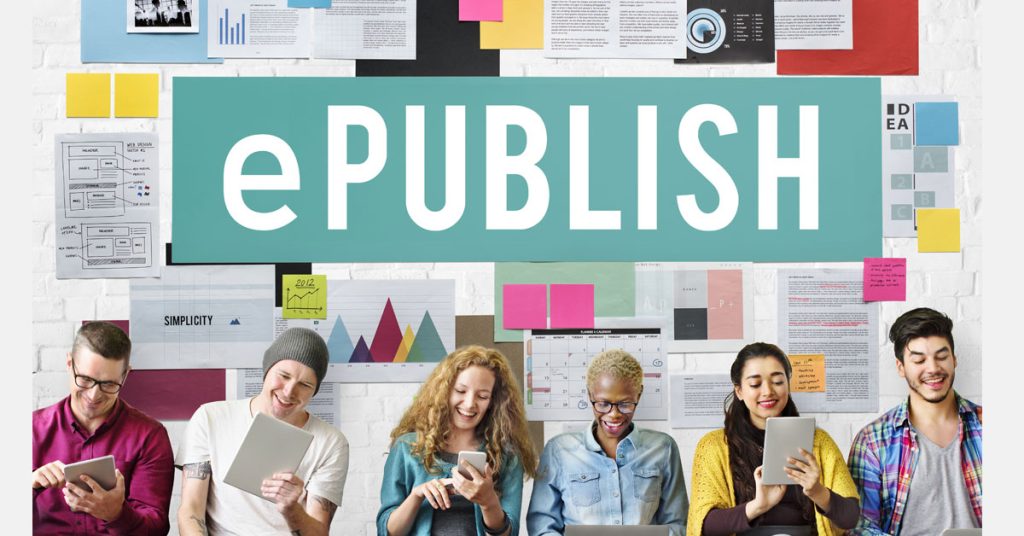
Why Do Publishers Find ePublishing More Lucrative Than Traditional Publishing?
ePublishing vs. Traditional – TL;DR
ePublishing vs Traditional Publishing (2025) Summary
Traditional publishing delivers a tactile, nostalgic experience with print books. It involves higher costs for printing, warehousing, and distribution but maintains a loyal reader base valuing physical copies.
ePublishing offers cost-effective, instantly distributable eBooks with interactive features. It appeals to digital-first readers prioritizing convenience and accessibility.
eBooks allow limitless copies at minimal cost, easy updates, and DRM protection, reducing revenue loss.
Combining both formats lets publishers reach diverse audiences, maximize revenue, and adapt to a digitizing market.
Tools like KITABOO enable seamless conversion from print to interactive, secure eBooks, enhancing engagement and learning.
The digital age has transformed how we consume content, impacting industries across the board, including publishing. In the face of this evolution, publishers are increasingly embracing e-publishing alongside traditional methods to stay relevant. This dual approach caters to a diverse audience: those who cherish the tactile experience of print books and the tech-savvy readers who prefer digital formats.
Traditional publishing
Print books offer a unique, irreplaceable experience. They carry an old-world charm, evoking nostalgia and a sense of progress as one turns the pages. Despite the higher costs associated with printing, warehousing, and distribution, the demand for print books remains strong, supported by a dedicated readership that values the physical aspect of reading.
Related read: eBook Creator | List of 10 Best eBook Creation Software
Physical books have an old-world charm that the modern eBook cannot replicate or compensate for. Nothing can match the nostalgia of curling up in your favorite spot engrossed in a book as the hours fly by. With the books, you are transported into a world of your own with the narrative giving you food for thought or calming your frayed nerves. The print book also seems to have a life of its own – a smell of its own that goes deep into your consciousness as you flip through the pages. This is why there is so much nostalgia associated with print books. Years later, you open the book again and the smell of its pages will take you down memory lane. Reading a print book is going down a physical journey and so you can actually feel your progress as the pages get fewer and fewer, and you move towards the destination.
The print book has a very loyal audience of its own. And not just the book – the very act of browsing through libraries or bookstores is a sublime experience that few other activities can match. Put in a nutshell, there is a vast audience that still yearns for the print book. This itself builds the case for traditional publishing. The days of the print are far from over, a fact that no publisher can ignore. There is a wide audience for print books, which in turn, means sales and revenue for the publishers.
On the flip side, traditional publishing is more expensive than e-publishing. Print copies require paper and every time there is any update to a book, the publisher has to print new copies. Then there are the additional charges of warehousing and transportation. People have to visit physical stores to make a purchase though this difficulty has been addressed to an extent in that publishers are using e-commerce platforms to sell their books. All said, the days of traditional publishing are far from over – the print books have a very devoted and loyal audience who continue breathing life in traditional publishing.
e-publishing
On the other hand, e-publishing meets the demands of a digital-first audience. eBooks are cost-effective, easily distributable, and offer interactive features that enhance the reading experience. They cater to readers who prioritize convenience, speed, and accessibility, allowing them to carry entire libraries in their pockets.
Related read: 7 Ways to Protect Your eBooks from Online Piracy
eBook content can be hyperlinked to various internal and external resources. This proves particularly beneficial for textbooks as it allows learners to access more content on the subject to build on their knowledge. Reader can store an entire library of eBooks on their smartphones or tablets and read them anywhere and anytime. Besides, these books can include a range of interactive features so that as a reader you are not just passively reading a book but interacting with the story and the characters. So rather than a passive reader, you actually become a participant to the story. The eBooks thus offer a very different experience than the traditional print books.
For the publishers, it makes sense to create eBooks for the online audience. Once an eBook is designed you can create as many copies as you want at no or minimal additional cost. Once a buyer purchases the eBook, you can simply provide them a link to download the eBook, which means that you don’t have to courier to them to their physical addresses. You can also DRM-protect your eBooks and prevent any unauthorized share, and in turn, any loss of revenue.
Guide:
How to Build an eBook Store
e-publishing over traditional publishing
Both traditional and e-publishing have their merits and cater to different reader preferences. While print books offer a tangible experience that many still crave, eBooks provide a practical and interactive alternative for the modern reader. Publishers benefit from embracing both formats, reaching a wider audience and maximizing revenue opportunities.
Now that you know about the benefits of e-publishing, Kitaboo, an award-winning publishing software can be your right choice to convert print books to eBooks in huge scale with minimal hassle. With Kitaboo, you can create highly interactive and DRM-protected eBooks to provide an immersive reading experience. If you are publishing textbooks, you can also create interactive eBooks for personalized learning to suit various learning styles. You can also embed interactivity features such as video, audio, images, graphics, read aloud, and many such interesting features.
Key Takeaways
- The publishing industry is evolving to include both traditional and e-publishing methods to cater to diverse reader preferences.
- Print books offer a unique, nostalgic experience that is still highly valued by many readers.
- eBooks are cost-effective, convenient, and offer interactive features, appealing to a tech-savvy audience.
- By leveraging both formats, publishers can reach a wider audience, ensuring their survival and success in a digital age.
Contact our expert team now and get started!
To know more, please write to us at contact@kitaboo.com
Suggested Reads:
- How to Maximize Learning with Interactive eTextbooks
- How Digital Video Books Make Literature Accessible to All
- The Benefits of Read-Aloud eBooks
- Corporate Training & Development Trends
- Cross-Platform eBook Readers
- SCORM
- K12 Publishers
- Associations & Societies
- Trade Publishers
- Training Companies
- Content Aggregators
Discover how a mobile-first training platform can help your organization.
KITABOO is a cloud-based platform to create, deliver & track mobile-first interactive training content.



